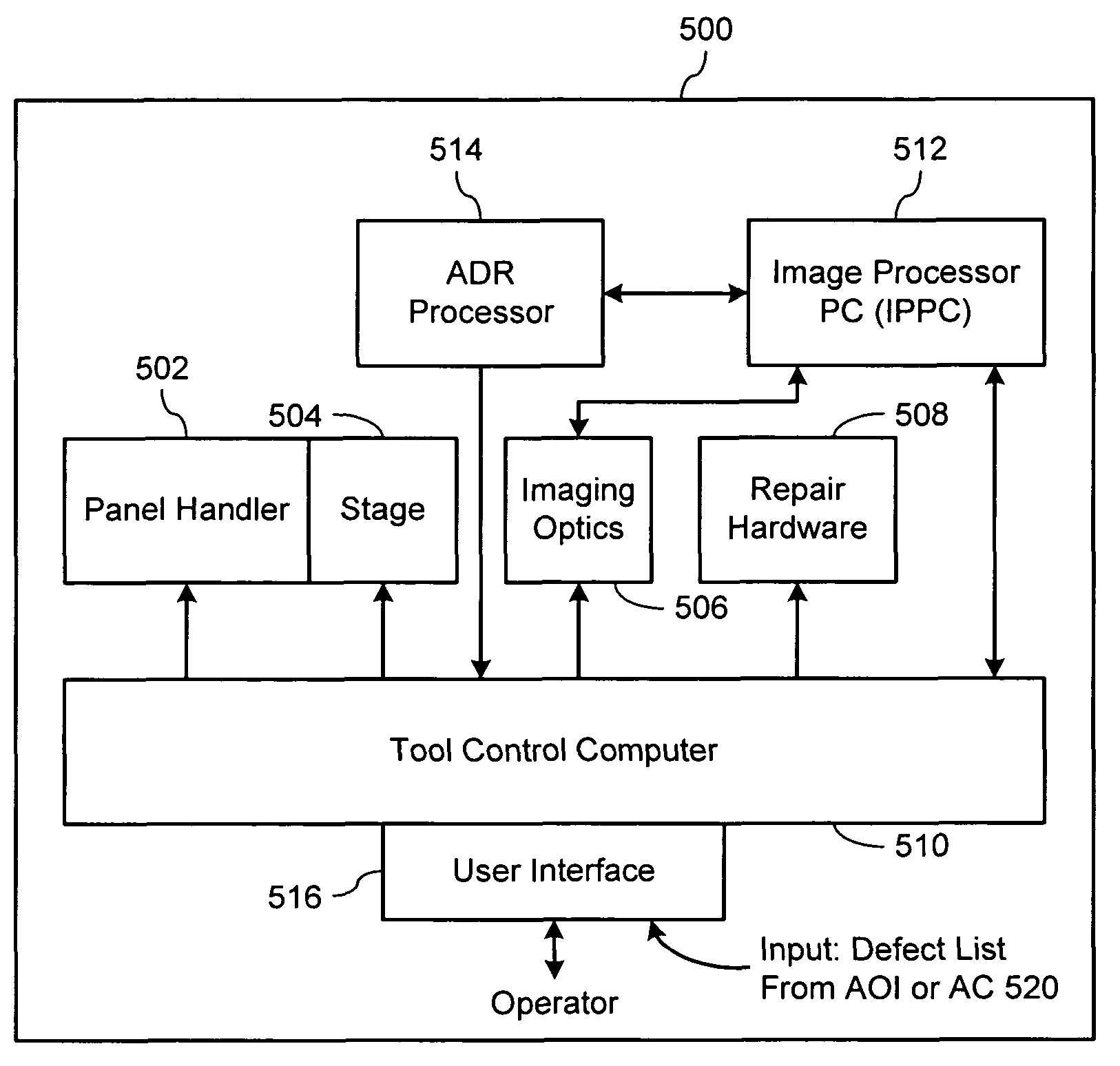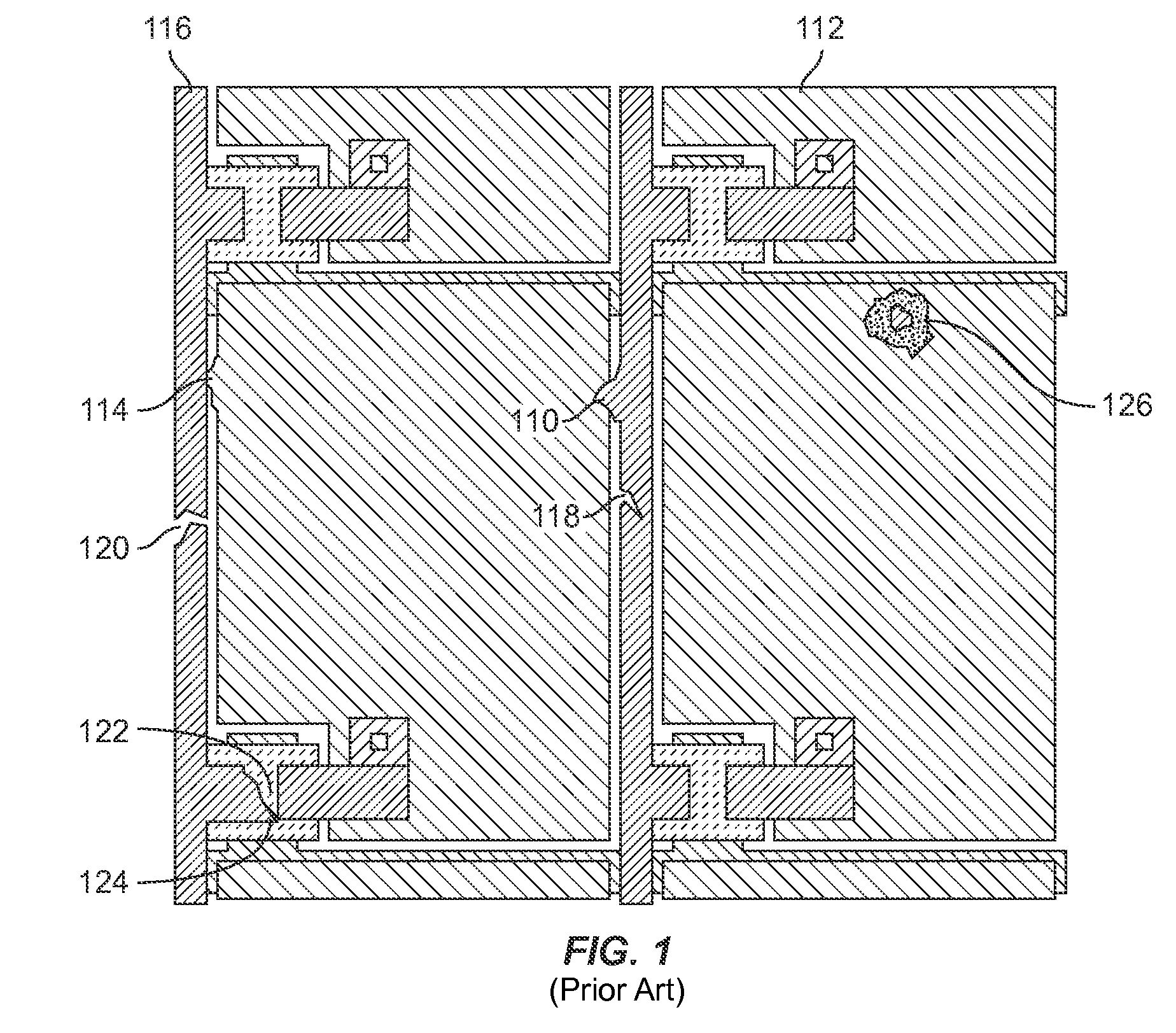Automatic defect repair system
a defect repair and automatic technology, applied in the field of flat panel displays, can solve the problems of affecting the electrical and/or optical performance of the final lcd product, mask problems, over or under etching, and unavoidable defects, and achieve the effect of reducing the amount of operator time and efficient decision-making
- Summary
- Abstract
- Description
- Claims
- Application Information
AI Technical Summary
Benefits of technology
Problems solved by technology
Method used
Image
Examples
Embodiment Construction
[0036]FIG. 5 is a functional block diagram of a LCD array repair tool 500, in accordance with one exemplary embodiment of the present invention. Exemplary array repair tool 500 is shown as including, in part, a panel handler 502, a stage 504 to move the sample LCD panel (not shown) into, within, and out of the tool; imaging optics 506 to capture images; repair hardware 508 to make defect repairs; a tool controller 510 adapted to control the hardware used to repair defects, an image processing computer 512 (IPPC) that processes the defect images, and an automatic defect repair (ADR) processor 514. Human operators control the tool through the graphical user interface 516 (GUI). In some embodiments, ADR processor 514 may be a part of or disposed in image processing computer 512. In yet other embodiments, ADR processor 514 may be a part of or disposed in embedded tool control computer 510. Furthermore, tool control computer 510 may be an embedded computer.
[0037]Imaging optics 506 typica...
PUM
 Login to View More
Login to View More Abstract
Description
Claims
Application Information
 Login to View More
Login to View More - R&D
- Intellectual Property
- Life Sciences
- Materials
- Tech Scout
- Unparalleled Data Quality
- Higher Quality Content
- 60% Fewer Hallucinations
Browse by: Latest US Patents, China's latest patents, Technical Efficacy Thesaurus, Application Domain, Technology Topic, Popular Technical Reports.
© 2025 PatSnap. All rights reserved.Legal|Privacy policy|Modern Slavery Act Transparency Statement|Sitemap|About US| Contact US: help@patsnap.com



